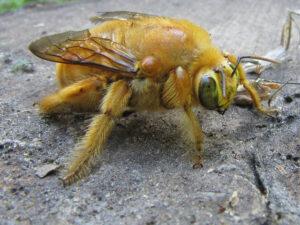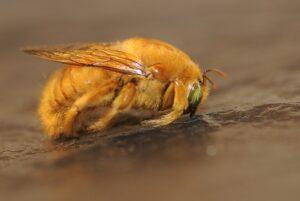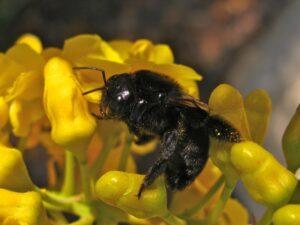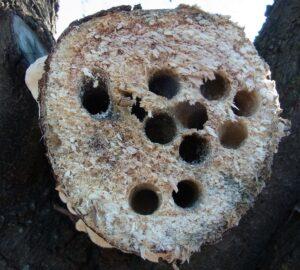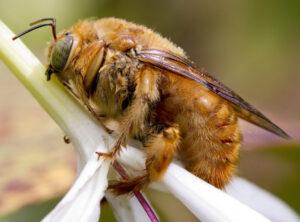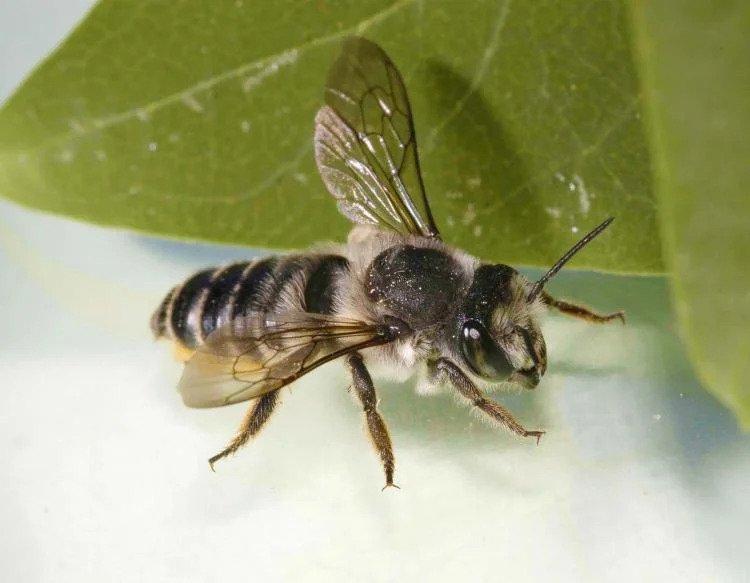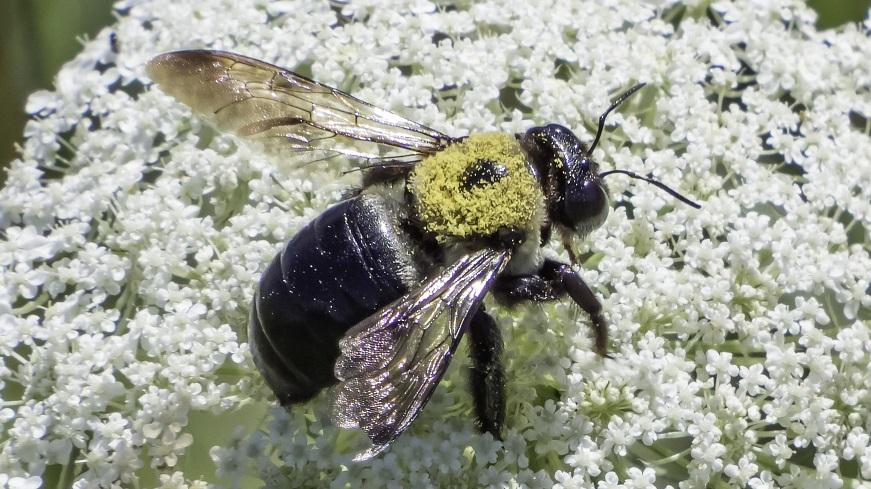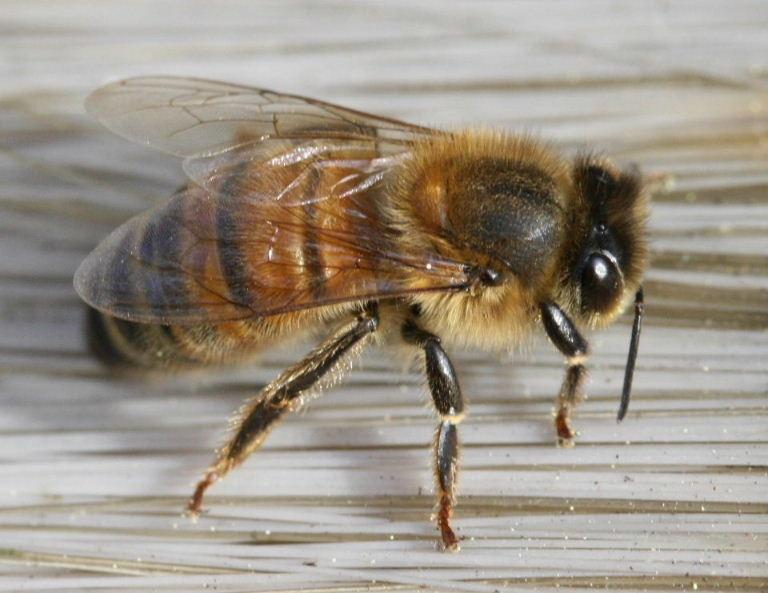Valley Carpenter Bee (Xylocopa sonorina)
Updated on
28/10/2022The Valley Carpenter bee is one of the largest bees in its genus. It is named after the California Central Valley, where it burrows through the wood to make its nests. Also called the Hawaiian carpenter bee or Teddy bear bee, they are docile and are often shy to approach humans.
Scientific Classification
- Class:Insecta
- Order:Hymenoptera
- Family:Apidae
- Genus:Xylocopa
- Subspecies:X. sonorina
Conservation Status
Description and Identification
They can measure up to an inch (2.5) cm in length. The carpenter bee displays sexual dimorphism. The females are metallic black and slightly bigger, while the males are yellow or golden-brown with green eyes.
The species has two pairs of wings, with the females having ones that are metallic in color. Both the sexes have long, slender antennae.
Males possess a large thoracic gland through which they produce pheromones to attract females. They do not have stingers which are present in the females.
Distribution: Primarily found in California, Nevada, Arizona, Utah, and Texas. Also found in connecting parts of Mexico.
Habitat: Temperate deciduous woodlands located in valleys and foothills filled with oaks.
Do They Bite/Sting: Males: No. Females: Yes, but they rarely attack unless provoked.
Lifespan: Queen bees – Two or more years; workers – a couple of months; drones – about a year
Predators: Badgers, predatory flies, mantises, and some birds such as shrikes, woodpeckers, and bee-eaters
Behavior and Characteristics
Pheromone release and Mating behavior
The pheromones released by the males are highly attractive to females, and they use them to track and locate the male bee.
The pheromonal glands in males are activated before the mating season. They hover outside the nest holes of females waiting for them.
They try to capture the females’ attention by their loud buzzing and follow them to their holes in order to mate.
Female mate-searching behavior involves waiting for the male at a flower where she discovers the markings, pheromone releases, or finds a directed flight toward a marked spot from a distance.
Nesting
In carpenter bees, the season of nesting follows the phase when males display territorial flights for mating.
In the wild, the female carpenter bee tunnel through the wood in oaks. They do this by carving out the woods with their strong mandibles. The tunnels average 6 to 10 inches (15 to 25 cm) in depth.
During winters, young adults of this species hibernate in the tunnels and only emerge during spring. Most nests of carpenter bees contain a single female and her brood.
Food gathering
The species possesses strong mandibles, using which the males display territorial aggressiveness, while the females gather food.
They deploy a process called ‘nectar-grabbing’ where they use their mandibles to slice through the corolla in flowers to gain direct access to the nectar, thus avoiding pollination. This does not imply that they evade pollination totally. They are actually very favorable and important pollinators.
Pollination
The valley carpenter bees visit certain plants at various intervals throughout the day to provide pollen for the female and feed their young ones.
In Hawaii, X. sonorina is a pollinator of Passiflora edulis, a passion fruit species. Their large size helps them collect far more pollen from a flower than smaller honey bees. In agricultural establishments, they have been reported to be favorable pollinators over honey bees.
Flowers are the only food source and water for the bees. They deploy various types of pollination to ensure efficient pollination. They employ a technique called buzz pollination for plants of the family – Solanaceae with close anthers. Carpenter bees sonicate the dry pollen grains out of the flower’s anthers by creating a ‘buzz,’ i.e., moving their powerful thoracic muscles.
Thermoregulation
The valley carpenter bee has the unique ability to maintain body temperatures during extreme conditions without overheating or freezing by modifying its foraging patterns.
Life Cycle
The mating season occurs in spring when the females disperse to their burrows and add brood cells. In each of these cells, the female induces a substance called bee-bread. This bread is a mixture of nectar and pollen, on which the eggs are deposited. Each cell is sealed off with a partition of sawdust.
These cells are later on used as food by the larvae.
Infestation and Pest Control
These bees are highly destructive because they have the potential to damage homes, decks, outside furniture, and sheds made out of wood. This happens during the mating season when the females ward off in search of burrows to lay eggs.
Labeled insecticides specifically applied to nests in residential areas can help control developing bees in the wood. Later, the holes should be left for the females to enter and come in direct contact with the insecticide. Sealing the holes would prevent any usage of the nest site the following year.
Source
theethogram.files.wordpress.com, ucanr.edu, coasttocactus.sdnhm.org, ucanr.edu, live.staticflickr.com




